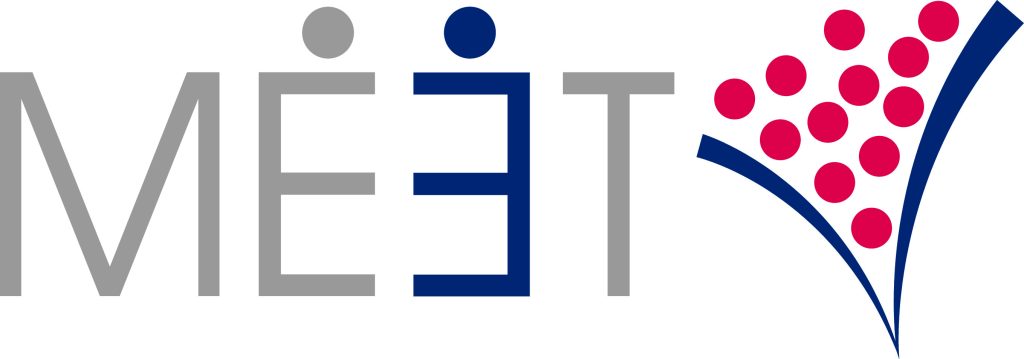You might be thinking: “Wow, they’re confident!” In fact, we are. Because when it comes to developing an event selection strategy for our clients, we focus on a results-centered process rather than specific events. Get the process right, and failure becomes nearly impossible. Tell us if you agree. Step 1: Determine your buyer persona In order to begin the event selection process, you need to identify a target or buyer persona. A buyer persona is a semi-fictional representation of your ideal customer. Using whatever technique’s necessary, you should be able to answer the following questions: Age and demographics Role and responsibilities Interests Concerns (What keeps him/her up at night?) Most pressing needs Obtaining answers to these questions will help you to: Make decisions about which events to participate in and how Develop messaging and offers to attract these buyers based on their concerns Step 2: Map event opportunities The next step is to search for events that will put you in contact with this buyer persona. At this stage, don’t worry about perfection—for the time being, more is better. How do you collect this information? Google (use a range of keyword searches to find relevant events) Network (ask friends in the industry which shows they attend) Exhibitors (people who have exhibited at the shows on your list). Ask them which other events they go to and how these events compare in terms of ROI, the organizers, and the audience. Competitors (see questions above). You can do this anonymously. Partners (who may be able to identify additional events, not on your list) Now it’s time for analysis. Step 3: Create an event scorecard There are many different types of scorecards and the variables used within them may vary based on your objectives. (For a preview and explanation of the scorecard we use with our clients, check out this webinar) The basic criteria, starting with the benefits, include: Quality Score: target audience/total audience %
Because this input is substantially more important than the other factors you’ll be accounting for, we recommend weighting this score. For example, consider making it three times more valuable than your other variables. Quantity, i.e., number of projected attendees Duration (days) Exhibiting floor location as a measure of audience exposure. On a 1-5 scale, how would you rate the projected exposure opportunity with target prospects? Now moving onto the costs: Exhibiting versus sponsorship Travel and staffing Feel free to contact us for more details on how to create a weighted event selection scorecard for your company. Step 4: Make your decision It’s time to decide which events will be entered into your annual strategy. At this point, you should have a ranking of high to low priority events. But you’re not quite finished. Next, you’ll want to overlay this ranking with additional data, such as the date and duration of each event, prioritizing the highest-ranked events within each quarter. Note: your goal is not to create an unlimited number of prospects. Rather, your goal is to create a steady stream of as many prospects as you can handle at one time based on your capacity. There is no reason to create more prospects than you can manage. That is just wasted potential energy. Because marketing and sales do not happen in isolation, it is also important to overlay sales goals. Whether it’s at the end of each event, month or quarter, you’ll want to know the number of prospects needed to reach your sales goals, taking into account the 6-12 month sales cycle. Creating an even flow of events throughout the year is optimal for helping to achieve these goals. Step 5: Embed your event selection strategy within your broader marketing plan While we believe trade shows and in-person events to be the best content marketing opportunity for B2B companies, it’s critical that your strategy is embedded in and integrated with additional modes of marketing. Whether it’s a Lunch and Learn, an executive briefing, or a new product release, make sure that your event schedule complements and leverages these opportunities within your existing marketing cycle. Updates and iterations Congratulations! You’ve completed your event selection strategy. Now don’t go putting it on a shelf to collect dust. You’ll want to refresh your strategy based on measured results and new events that pop up. At MEET, we recommend adjusting your plan once a quarter, extending the projection from that point on so that you always have a 12-month strategy on hand. Have we convinced you? There’s only one way to find out. Let us know if you have questions. For more on how to ensure trade show success in 2020, check out our recent webinar on this topic. To check out all of MEET’s webinar content on how to successfully scale your company in the U.S. market, subscribe to our YouTube Channel. About
MEET (meetroi.com) helps international B2B growth companies soft-land and scale in the U.S. through trade shows and in-person events. MEET’s processes help its clients ramp-up sales quickly and maintain a steady stream of high-quality prospects going forward. Contact Bill Kenney for a no-obligation conversation: bill@meetroi.com or +1 (860) 573-4821.

